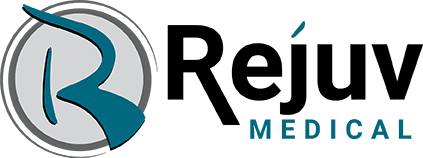
Wherever the art of medicine is loved, there is also a love of humanity. ― Hippocrates
The articulation is all about the joint. The knee, hip, elbow, ankle, fingers and spinal facets are all joints that are vulnerable to injury and breakdown. This is one of the main reasons people fly in to see us at Rejuv Medical from all around the world. It is because they’ve been told they need a joint replacement or a surgery and are wondering if there’s something else they can do before going down that extreme route. They don’t want surgery if it is not needed and they have heard about other options, like Prolotherapy, PRP and Stem Cell treatments. They want their lives back. They want to be able to hike, play, and enjoy life to its fullest. Not only do they want less pain and freedom from prescriptive medications, but they want the body to heal itself, if possible. This is the point in the conversation when we spend time talking about cell health. Along with the skills of the injector, optimization of cell health is critical to having great
outcomes with regenerative procedures.
You have now learned how to optimize cell health and healing. Before we can regenerate the articulation, we need to optimize the healing environment, so we get a robust response to our procedures and so that the healing that does occur will last. At our clinic, we start by teaching corrective exercise, healthy eating, working on dysfunctional movement patterns, dealing with their stresses, improving their sleep patterns, and avoiding toxins that break down the body. When they return for their regenerative joint treatments, they are 30 to 40 pounds lighter, have more energy, already have decreased pain scales, and are in a position to optimize their regenerative outcomes.
So, let’s look at articulation. The articulation is the joint where two bones come together, and movement and transfer of forces occurs. Joints are covered by a HYALINE CARTILAGE that aids in smooth movement. It is the shiny, slippery substance that coats the joint and aids in smooth, friction-free movement. You want your cartilage to be healthy and thick. With instability and dysfunctional movement patterns, this cartilage can start to wear thin. This is what arthritis is – thinning of the articular cartilage.
Next, DISK AND LABRAL CARTILAGE are supportive structures that are found in the joint, whose job is to guide movement and absorb forces. They are stabilizers and spacers. In the knee, an example of disk cartilage would be the meniscus, which is held in place by the small wispy coronary ligaments. The meniscus can be torn or breakdown by an acute injury or from chronic wear and tear. New studies are showing that the meniscus is very valuable, and that surgery to remove part of it leads to more instability, with a definite increase in risk of arthritis development. You want to keep your meniscus and, if possible, do things like PRP or Stem Cell treatments to heal and regenerate as opposed to surgical removal.
In the wrist, there is a similar type of structure called the TFCC (Triangular Fibrocartilage Complex). It is a cartilage complex at the base of the wrist that absorbs forces and transfers them into the wrist. It is vulnerable to wear and breakdown with weightbearing exercises like weightlifting, as well as wristweight-bearing sports, like cheerleading and gymnastics, as well as a fall on the wrist. The cartilage is also stabilized by the wrist ligaments that can also be weakened, making the TFCC more vulnerable to breakdown.
In the shoulder and hip, there is a ring-like structure called the labrum that extends off the joint socket with the goal of guiding movement and providing stability to the joint. It can be torn from over-use or acute stress and strain. Studies on labral surgery have shown the surgery to not be very successful. Regenerative treatments can be performed to both hip and shoulder labral tears using PRP to create a healing response at the site of the tear. It’s always better to keep your original anatomy and return it to a more functional repaired state instead of removing a structure that is integral to the joint’s function.
Next, the JOINT CAPSULE is like a connective tissue ‘saran wrap’ that encases the facet joints of our spine and the peripheral joints. Its goal is to guide joint movement and provide stability. The capsule can be stretched from trauma or from overuse and dysfunctional movement patterns in occupation or sports.
Finally, there are LIGAMENTS inside and outside the joints that stabilize movement and support the articulation. In the knee, we have the ACL and the PCL inside the joint, with the MCL and the LCL outside the joint. If they are injured and become
loose, instability sets in leading to accelerated degeneration. Within the ankle are the sinus tarsi ligaments. Outside the ankle joint are stabilizing ligaments on the medial and lateral side of the joint that prevent excessive movement, like rolling the
ankle. With recurrent sprains, these ligaments loosen allowing abnormal movement that leads to degeneration of the joint. The hip joint has an internal ligament called the ligamentum teres. The shoulder has big broad strong ligaments that prevent
anterior and posterior translation of the joints during activities like throwing a ball or swinging a tennis racket. If these strong, stabilizing ligaments are loosened from trauma or over-use, a dysfunctional movement pattern will lead to tendon breakdown and arthritis in the joint. We need healthy ligaments to maintain a healthy joint. The good news is we have treatments like PRP and Prolotherapy that can be injected into the ligaments to promote healing and stability.
